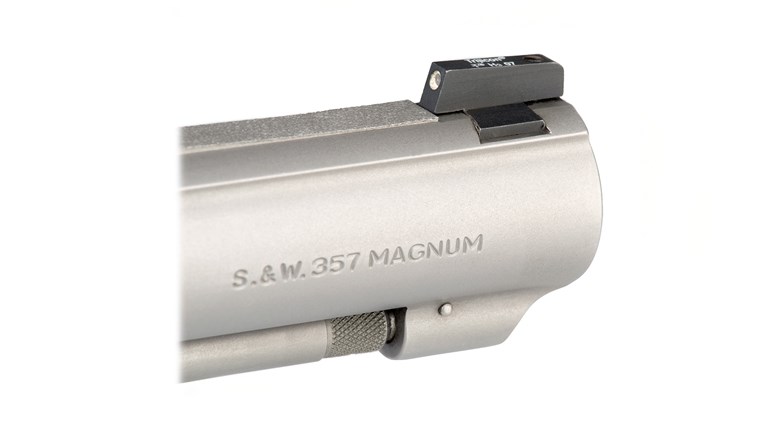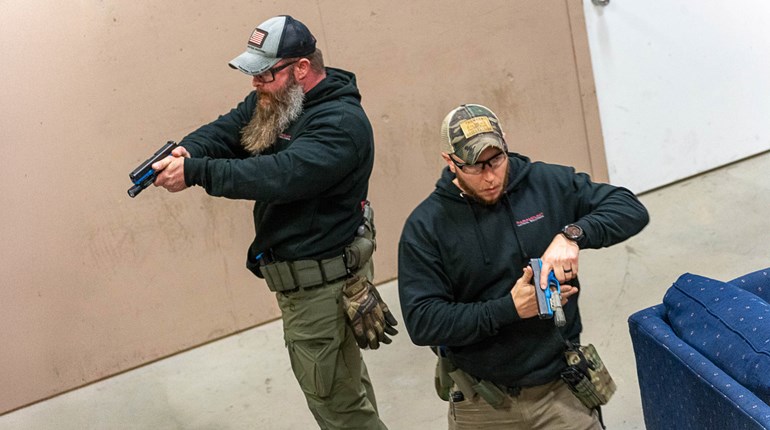
Thumb safeties, such as those found on 1911s, are but one type of manual safety commonly found on many handguns selected for concealed carry and/or personal protection.
The Problem
You just finished your first firearm-safety class and it’s clear to you that most guns have some sort of a safety on them, but it’s not clear how they make a gun safe. You heard terms like active safety, passive safety, internal safety and external safety, but you are not sure what the differences are and how they perform their designed duties. You were also told that no firearm of any type is 100-percent safe, which adds to the confusion. You need help in understanding more about semi-automatic pistol safeties before you buy your first handgun for personal defense.
The Solution
Please understand that guns are mechanical devices that do work in the hands of an operator. In untrained or less-than-careful hands they can be dangerous, much like a motor vehicle or gardening tool. Ultimately, it is the operator of the firearm who makes it safe or not.
Initial and continuing training with firearms should always begin with two basic tenets: Muzzle management (where the bullet comes out of the gun) and trigger-finger discipline (what makes the bullet come out of the gun). These are the two primary concerns when handling a firearm.
The muzzle should either be pointed at an intended target or—should a discharge take place—where minimal property damage and no personal injury would result.
The trigger finger should only come in contact with the trigger as a conscious effort when the decision to fire, dry fire or administratively operate the firing mechanism takes place, with consideration as to where the muzzle is pointing during that contact.
Keeping these two considerations at the fore when handling firearms of any type will go a long way toward maintaining a safe environment.
Mechanical safeties on firearms are designed to assist the shooter in the ownership and safe handling of their shooting tool.
Active or external safeties are typically levers, buttons or switches, accessible on the outside of the gun, that must be intentionally moved with finger or thumb pressure to unlock the firing mechanism, enabling it to be fired. An example would be the thumb safety of a 1911-style pistol, which prevents the gun from being fired until it is depressed and disengaged, unlocking the sear and the slide.
Passive safeties can be internal or external on a semi-automatic pistol, but require no special action to disengage in order for the pistol to fire. The trigger safety on many semi-automatic pistols is designed to prevent the pistol from firing should it be dropped or otherwise mishandled by the operator, but is automatically disengaged when the trigger is pulled in the normally accepted manner.
Most modern semi-automatic pistols have a firing-pin or striker safety (depending on whether it is hammer- or striker-fired) which locks those parts, keeping them from contacting the primer of the chambered cartridge until the trigger is fully pulled.
In either case, the trigger has to be fully pulled to cause the gun to fire, which is the original intent of pulling the trigger.
The disconnector is a passive safety found on all quality semi-automatic handguns. The job of the disconnector is twofold, with each part of equal importance. It limits the semi-automatic pistol to one shot per pull of the trigger and simultaneously prevents the gun from firing when the slide and barrel are not in the proper position to contain the pressure of the cartridge at discharge.
There are other safety mechanisms that can be found on semi-automatic pistols that are useful in varying degrees, largely depending on the perspective of
the user.
Grip safeties require the shooter to grip the pistol in a specific manner to enable firing the pistol. Given that not every hand is the same shape with the same range of motion, the grip safety may be a plus or a minus to any given individual.
Magazine safeties and their value are a matter of personal opinion. When the magazine is slightly disengaged or fully removed from the pistol, the magazine safety prevents the pistol from firing. Only when the magazine is fully seated
will the pistol fire.
Half-cock notches are found on some semi-automatic pistols. Their job is to prevent the strike of the hammer to the firing pin should the hammer and sear disengage without the trigger being pulled. The safety intercept notch on certain SIG Sauer pistols is a type of half-cock notch, which provides a resting place for the hammer against the sear when the cocked hammer is safely lowered forward by the de-cocking lever.
The de-cocking lever is an active safety found on most DA/SA pistols that is used to safely lower the hammer from the single-action to the double-action position without touching the trigger. This feature makes it impossible for the gun to fire when performing this action.
Loaded-chamber indicators are considered safeties in some circles. Depending on their design, they provide visual and/or tactile indications that there is a cartridge in the chamber of the pistol, but ultimately are not a true substitute for safely ensuring a gun is unloaded, hence the name “loaded-chamber indicator.”
Keep in mind that safeties are merely mechanical devices that aid the user in maintaining overall safety with a gun of any type. Ultimately, it is the person handling the gun who determines the level of safety demonstrated.



































